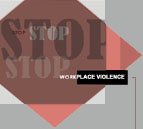WorkplaceViolence911
Search
User login
Civility as a Safety Issue
Civility as a Safety Issue
©2011 Gail Pursell Elliott
Unemployment and job security have created some disturbing behaviors in today’s workplaces. Supervisors Intimidating employees and verbally bullying them has become more prevalent as well as coworkers behaving subversively to protect their jobs from others viewed as a threat to their continued employment. Behavioral risk management is the realm in which we address workplace violence. Not addressing incivility and disrespectful behavior in the workplace especially in times such as these is risky business. Creating a safe environment in this area can be challenging and like every other safety issue, requires an organizational commitment, structural and procedural assessments, and implementation of safeguards such as communication education, monitoring and intervention. Unfortunately, most programs addressing issues of violence are more reactive than proactive. Once the need has been demonstrated either by overt acts of aggressive behavior, threats or worse, a company will scramble to figure out what happened in that instance rather than looking at the organization as a whole.
What most organizations don’t understand is how long disgruntled employees stay disgruntled. As an expert on bullying, mobbing, and harassment in workplaces and schools, I’ve worked with individuals who have angry and hostile feelings towards the workplace and the individuals who abused them or pushed them out and are unable to let those feelings go even if they are able to move on with their lives. Humiliation has been described as having the effect of killing someone over and over. The humiliation or desecration of a human spirit is one of the main reasons that former or current employees will retaliate with an overt act of violence, the most extreme of which is a workplace shooting. It is interesting to note that in a large percentage of these cases, the perpetrator also commits suicide. This indicates that the person was suicidal and engaged in homicide as a last act of taking control in an environment that destroyed their sense of self and left them feeling out of control and without recourse. When mobbing was researched in Sweden in the 1980’s, it was determined that between ten and twenty percent of the suicides in the country at that time could be directly attributed to mobbing/bullying in the workplace. None of these cases involved violence toward others.
Civility is often coupled in the same phrase as ethical expectations within an organization as they often are closely related as indicators of one another. High turnover, low morale, an increase in sick leave and stress related workman’s compensation claims, unpleasant employee relations, factionalism, lowered productivity, a lack of teamwork and trust, are just some of the indicators that a risk management assessment and intervention is necessary. It is not only safer but less expensive to rehabilitate, reassign, provide counseling for employees, and to examine and change interactive processes within your organization than it is to contend with inordinate sick leave, stress related workman’s compensation, unemployment, litigation, and more. A good beginning is to have a behavioral risk management audit performed by an outside entity who is not only familiar with the indicators of bullying and mobbing but also who can remain objective to determine what is needed.
Meanwhile, a proactive approach is to create an emotionally safe and respectful work environment for everyone. This begins with clear and respectful communication and not only setting expectations but also modeling the behavior that is expected as well as providing training as necessary. Policies, mission statements and codes of conduct are reduced to merely fine words on paper when they are not lived as well as stated.
Short bio options:
Gail Pursell Elliott, "The Dignity and Respect Lady"©,
Speaker, Author, Trainer, and Consultant, Gail is founder of Innovations "Training With a Can-Do Attitude" ®, located in central Iowa, USA. She presents refreshing and positive management and human relations seminars based on people treating each other with Dignity and Respect, No Exceptions. Gail is an internationally recognized expert on mobbing and bullying in schools and workplaces and is author of the book School Mobbing and Emotional Abuse: See It – Stop It – Prevent It with Dignity and Respect; the weekly e-newsletter Food for Thought, and is coauthor of the book Mobbing: Emotional Abuse in the American Workplace.
Gail Pursell Elliott, “The Dignity and Respect Lady”, has over 20 years experience in middle and upper management, founded Innovations Training in 1998, and is author of several books including School Mobbing and Emotional Abuse and co-author of the book Mobbing: Emotional Abuse in the American Workplace. Her weekly Food for Thought is read by people around the world. Gail trains employees for corporations, associations and universities, designs sessions upon request to address specific needs and timely issues, and is a featured speaker at conferences as well as a sought after media expert on workplace and school violence. Gail has been a guest on such programs as MSNBC’s Deborah Norville Tonight, ABC World News NOW television programs and the Workplace Violence Today program on talk radio.
